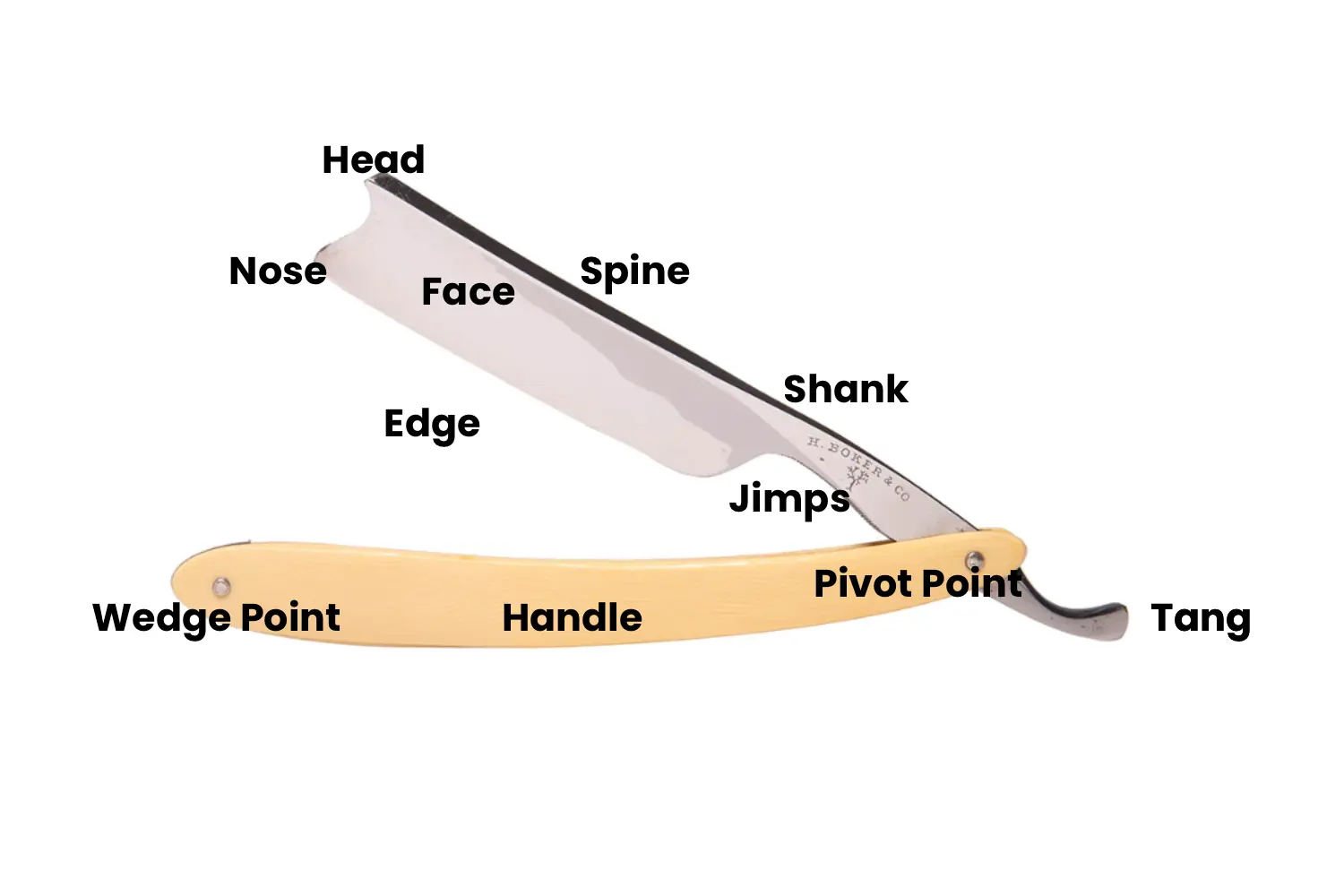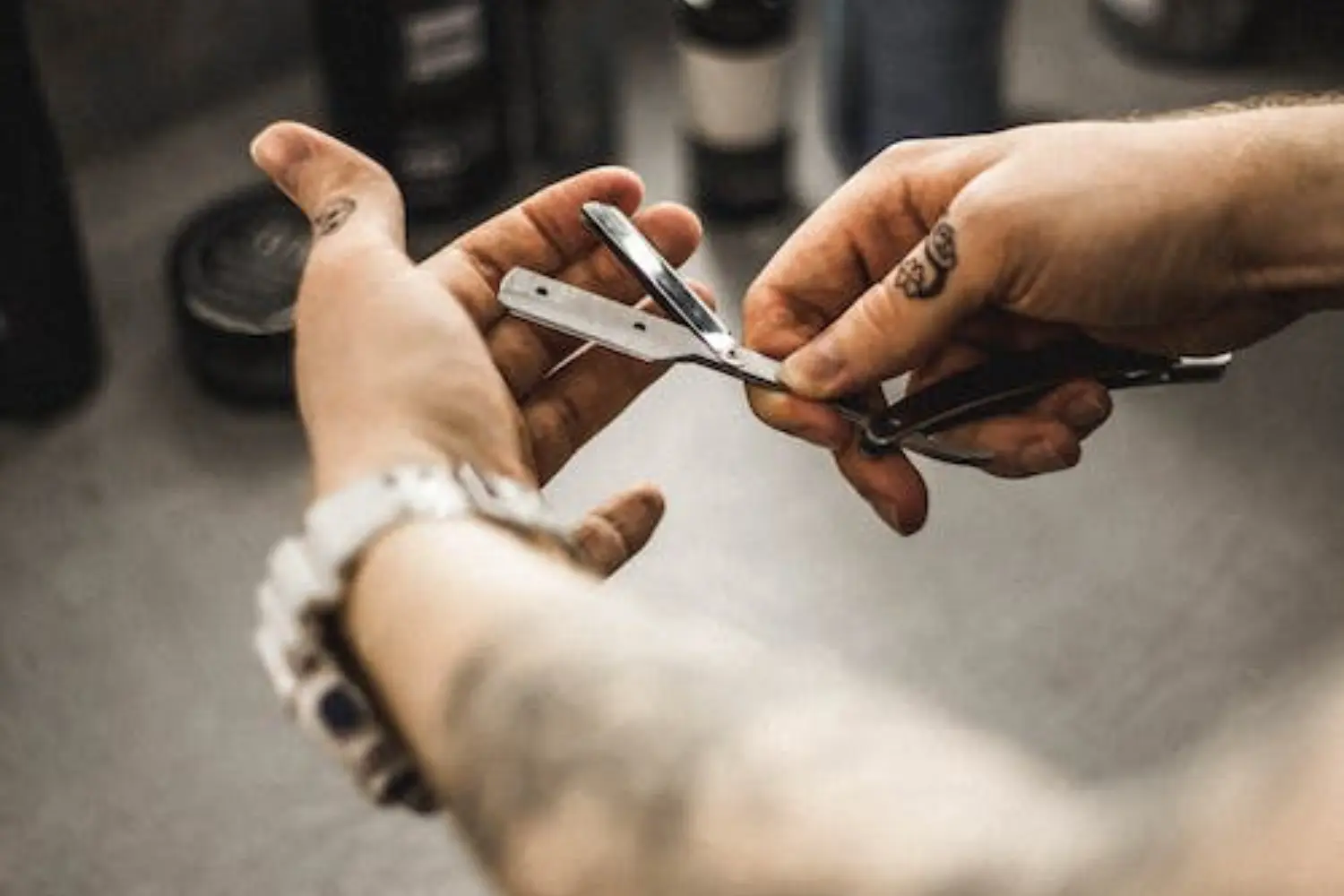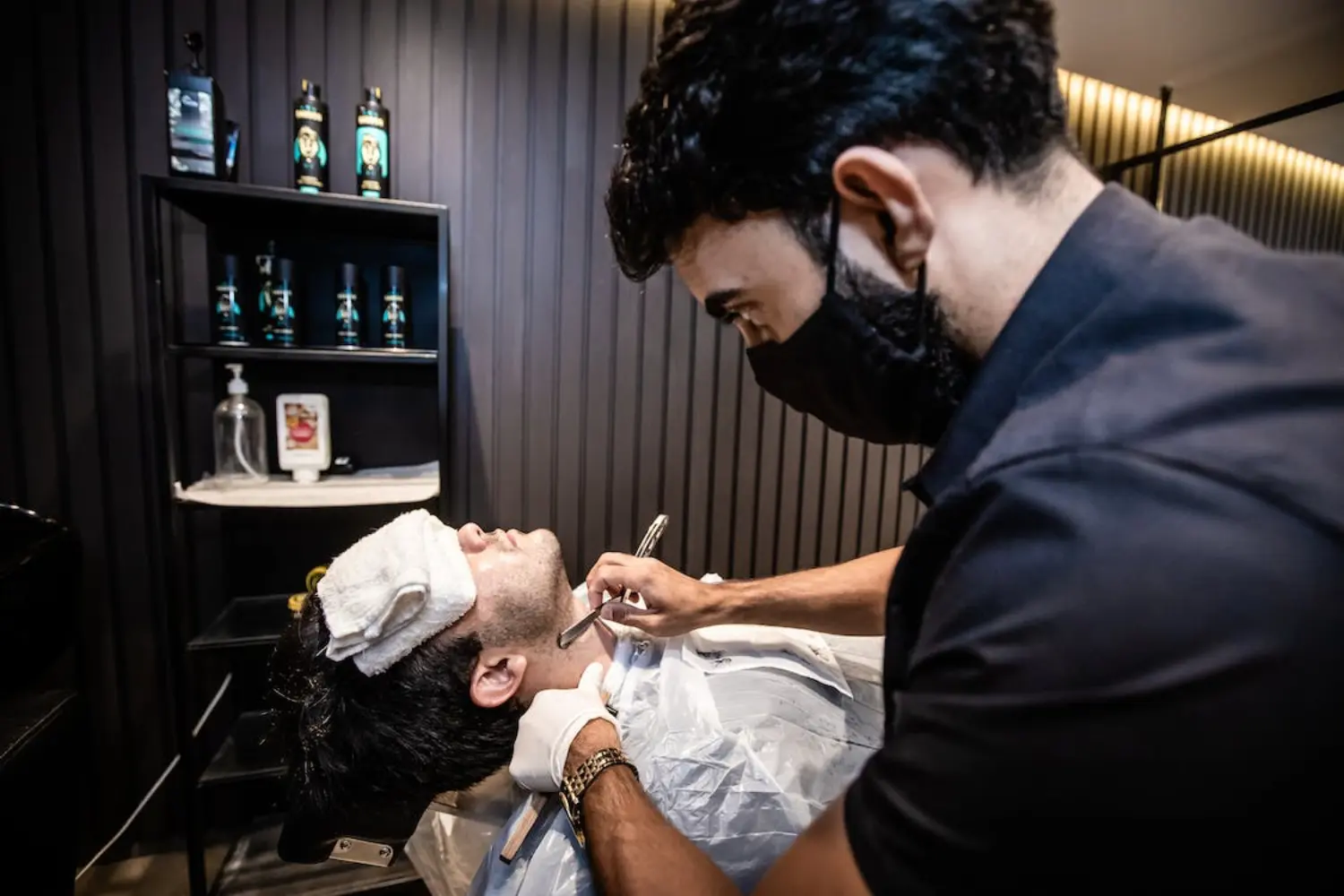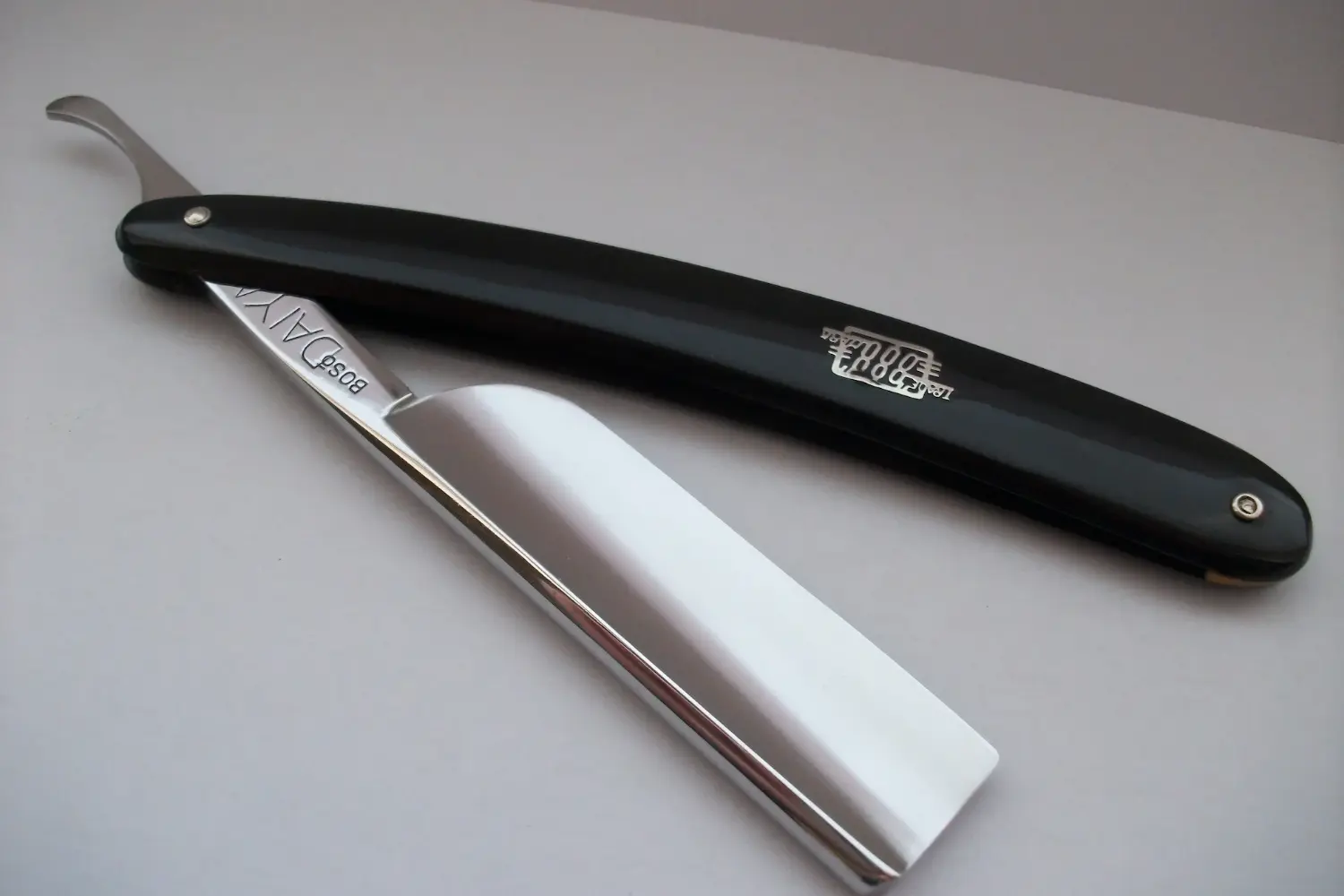Dating back hundreds of years, the straight razor is one of the oldest and most traditional forms of shaving.
While yes, this shaving tool has taken a back seat to more modern types of razors, its unique appeal is being rediscovered by a new generation.
What is a Straight Razor?
A straight razor, often referred to as a ‘cut throat razor,’ is a type of razor that consists of a single blade that can fold back into its handle. It’s known for its long, sharp blade that offers an extremely precise and close shave.
Design
From spine to wedge, the straight razor can be broken down into several key components.
This diagram shows the various parts of a straight razor:

A few important parts of a straight razor include:
- Edge: This is the cutting part of the blade. It is extremely sharp and needs to be properly maintained to provide an efficient shave.
- Toe: The toe of a straight razor is the endpoint of the blade’s cutting edge. It can vary in shape and sometimes may be rounded to reduce the risk of accidentally cutting one’s skin.
- Heel: Opposite the toe, the heel is the part of the edge that is closest to the handle. Its proximity to the handle allows for more control during shaving but may be a bit challenging to navigate smaller facial areas due to its position.
- Spine: Serving as the backbone of the razor, the spine provides the necessary support and rigidity to the blade. Its thickness can influence the weight and balance of the razor, affecting the shaving experience as a whole.
- Face: The broad, flat section of the blade, the face is the area that is stropped to help maintain the razor’s sharpness. It also acts as a guide, providing the right angle for a proper shave.
- Tang: This is the part of the razor that extends from the blade and eventually forms the handle. The tang is generally where you hold the razor during use—its design influences the grip, control, and balance during shaving.
- Jimps: These are little grooves or notches usually present on the underside of the tang. Jimps provide grip enhancement, making the razor easier to hold and utilize, especially when hands are wet or slippery.
- Handle/Scale: The scale is another name for the handle of the straight razor. It protects the blade when the razor is closed and offers balance during shaving. Scales can be made of different materials like wood, horn, bone, or synthetic substances like acrylic or celluloid.
Types of Blades
While the overall form-factor is identical across different straight razors, there are a few key differences in blade types that can significantly impact the shaving experience. These types of blades include:
| Type | Description |
|---|---|
| Square Point | Square point straight razors have a straight point profile and are great for detailed edging. |
| Round Point | The round point blade is a popular choice for beginners. It has a rounded point that minimizes the risk of accidental nicks and cuts. |
| French Point | Also known as an oblique point, French point blades have a sharply angled second curve. They are used primarily for detailed work in areas like under the nose. |
| Barber’s Notch | As the name suggests, it has a small notch at the blade’s edge making it easier to open. |
| Spanish Point | This design has an upper side of the blade that curtails into a point, similar to a spear. |
Who Uses a Straight Razor?
Straight razors are not as widely used today as they are often wedged between the very cheap disposables and the ultra-convenient cartridge razors. However, men who value tradition, sustainability, and a close shave continue to use them.
In fact, some folks report that straight razor shaving can be quite a cathartic or calming experience, akin to a personal grooming ritual or rite of passage.
Barbers and stylists also frequently utilize shavettes, a modification of the straight razor design, which have replaceable blades. This ensures hygiene between clients while maintaining the precision and technique traditional straight razors are known for.
But Aren’t Shavettes and Straight Razors The Same?

Despite appearing nearly identical at first glance, shavettes and straight razors are worlds apart when it comes to their shave performance. Most folks find that straight razors are easier to learn as they have a better balance and provide a smoother shave due to the blade’s thickness and weight.
In contrast, shavettes are much sharper as they utilize disposable blades that can be replaced after each use, or when the blade becomes dull. This sharpness, while beneficial for achieving a close shave, can actually increase the likelihood of nicks and cuts, especially for novices.
Should you want to learn more, we highlight all their differences between one another here.
Are Straight Razors Practical for Everyday Shaving?

In today’s world of fast-paced living, straight razors might seem impractical to some due to the time, skill, and maintenance they require. Unlike safety razors, cartridge razors, or electric shavers that readily cater to the “grab-and-go” culture, straight razors demand a certain level of expertise and a more leisurely pace.
In short, they aren’t practical for most individuals. They require regular honing and stropping to maintain their sharpness, and straight razors are also more difficult to use – there’s a steep learning curve to avoid nicks and cuts.
Additionally, folks who like to manscape or shave their head will find that the straight razor doesn’t really work well for these types of tasks. Its design simply isn’t ergonomic or flexible enough to cater to the contouring requirements of these areas.
Maintenance

Despite being a fixed-blade design that will last for virtually a lifetime, a straight razor requires regular care and maintenance to keep it in optimal condition.
To begin with, the blade must be stropped before each shave. Stropping is a process where the blade is run back and forth across a leather strap, or strop, to align the edge of the blade for a smoother, more efficient cut. This process helps to remove any microscopic bends or folds from the edge of the blade that might hinder the shaving process.
Every six months to a year, depending on the frequency of use, your straight razor will also likely require honing. Honing involves grinding the blade against a sharpening stone known as a hone, restoring the razor’s cutting edge.
You should also clean the blade after each shave, typically using warm water and a soft piece of cloth. Wipe in the direction of the blade’s edge to avoid any damage to the blade or potential injury to yourself.
Furthermore, storing your straight razor properly is equally important to sustain its lifespan. It should be kept in a dry and well-ventilated area to avoid rust or corrosion.
Learning Curve
Of all the shaving tools, with perhaps the exception given to the shavette, mastering a straight razor shave will take considerable time and effort. Estimates suggest that it typically takes a few months until you fully understand the right techniques and achieve consistently smooth results.
There will be plenty of nicks and cuts along the way, as understanding the right angle to hold the razor is crucial. Therefore, we recommend always having a styptic pencil or alum block on hand, as these products are designed to quickly stop bleeding from minor skin injuries.
Expected Shave
Like any single-edge razor, the straight razor can deliver smooth and consistent results. Additionally, men prone to ingrown hairs or razor bumps might find straight razor shaving beneficial. Since straight razors cut the hair cleanly without tugging or pulling, they can reduce the likelihood of these common skin irritations.
Of course, other factors including the prep, shaving cream, etc. all affect the quality of the shave.
The Downsides of Straight Razor Shaving
It’s important to note that straight razors have fallen out of fashion among the population at large for a few valid reasons. For one, as previously mentioned, they have a steep learning curve and require significant patience and practice to master. Misuse can easily result in serious cuts and nicks, which can be a deterrent for many individuals.
Secondly, the maintenance level of a straight razor is quite high. Users need to strop the blade before each use and hone it periodically to keep the blade sharp. In comparison, modern razors like cartridge or safety razors require minimal maintenance, with the only regular task being blade replacement.
Third, straight razors are not particularly versatile when it comes to shaving various body areas. Due to their design and the method of shaving involved, they may be ill-suited or uncomfortable for shaving body hair.
Lastly, air travel with a straight razor isn’t really convenient as it requires you to check your luggage – straight razors are prohibited from carry-on baggage due to their potential as a safety risk.